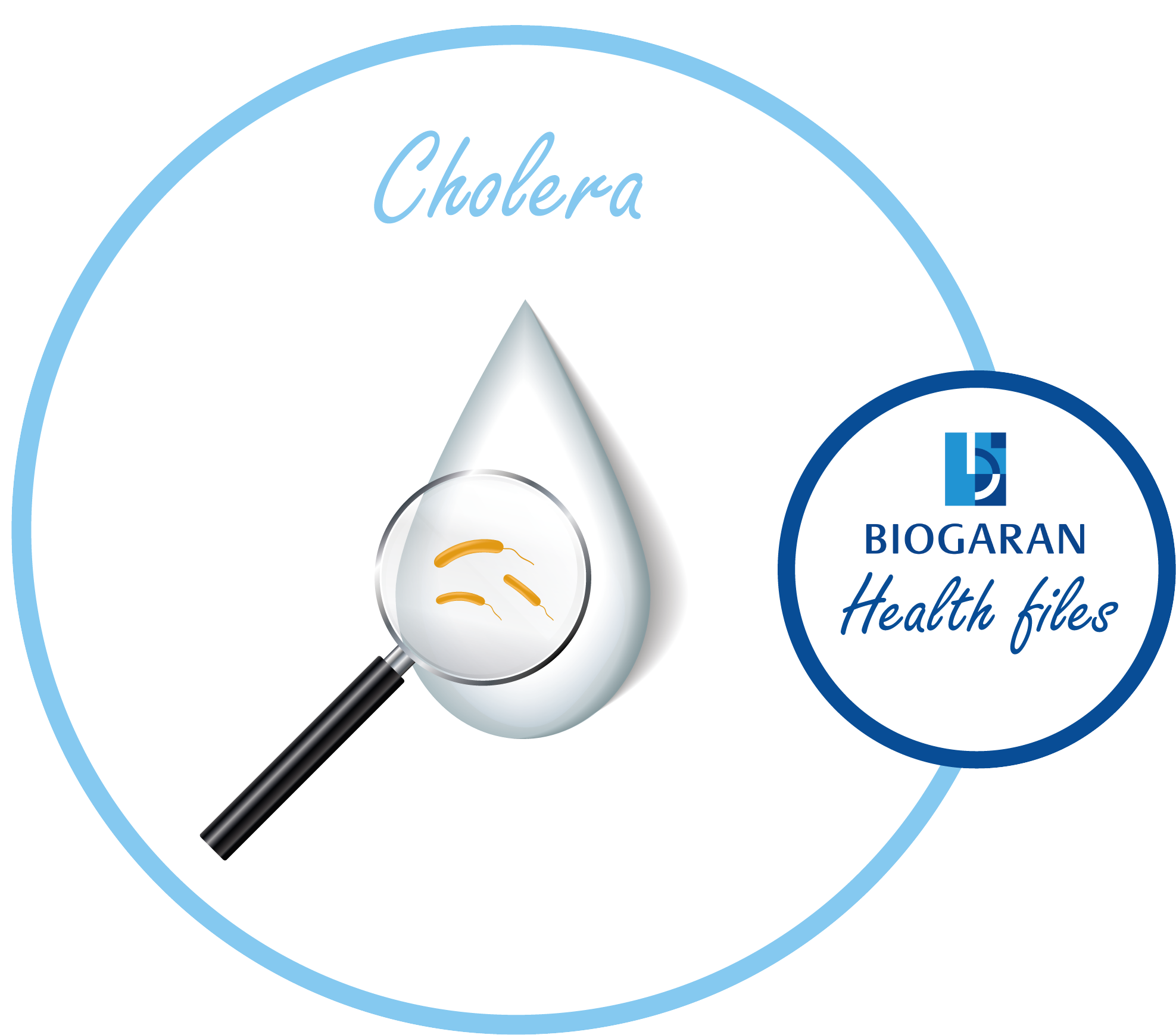Understanding Cholera
Explore this health file to better understand Cholera: its causes, its symptoms but also the means of treatment.

Posted on
I. Definition and key figures
Cholera is an acute intestinal infection caused by the Vibrio cholerae bacterium. This disease can lead to severe watery diarrhea and rapid dehydration. It is caused by ingestion of food or water contaminated by the bacterium. [1][2]
Cholera generally affects populations living in precarious conditions, with limited access to drinking water and inadequate sanitary facilities. [2]
Key figures:
- In 2022, according to the World Health Organization (WHO), 472,697 cases of cholera and 2,349 cholera-related deaths were reported in 44 countries. [2]
- Africa is the continent most affected by cholera, accounting for over 50% of cases worldwide. [3]
- In 2022, cholera affected 15 African countries, resulting in approximately 80,000 cases, and 1,863 deaths in these countries. [4]
II. Causes
Cholera is mainly caused by ingestion of water or food contaminated with Vibrio cholerae bacteria.
Cholera is triggered by infection of the small intestine by Vibrio cholerae bacterium. It secretes a toxin that causes abundant and watery diarrhea, which can lead to serious loss of water and salts and may be responsible for patients’ death. The bacterium also causes severe dehydration, resulting in extreme thirst, muscle cramps and general weakness. [5]
The diarrhea caused by the disease is released into the environment, and if sanitary conditions are not met, other water sources can become contaminated and in turn infect other people. [3]
III. Symptoms
Cholera is an extremely virulent disease. However, most people infected with the disease have mild symptoms, and in some cases, no symptoms at all.
The main symptoms of cholera are as follow:
- Acute, severe watery diarrhea leading to an important dehydration
- Nausea
- Vomiting
- Leg cramps
Symptoms occur between 12 hours and 5 days after ingestion of contaminated food or water. [6]
If not treated promptly, cholera can lead to death. [6]
IV. Prevention
Cholera prevention is based on measures to reduce the risk of infection [5]:
- Purification of water supply systems, improvement of sanitation infrastructures and hygiene
- Use of boiled or chlorinated water and avoidance of raw vegetables, fish, or undercooked shellfish
- Two doses of oral cholera vaccine
V. Treatment
Cholera is an easily treatable disease when diagnosed early. Treatment is mainly based on oral or intravenous rehydration and the administration of antibiotics.
Most people can be healed through prompt administration of oral rehydration salts (ORS). These salts are designed to replace the body’s losses of fluids and mineral salts due to diarrhea and vomiting. [6]
Severely dehydrated patients require intravenous saline solution. [5]
Cholera can also be treated with antibiotics. These are administered to reduce the duration and severity of the illness. However, the use of antibiotics does not replace rehydration, which remains the mainstay of treatment.
In children under 5, Zinc may be recommended as a complement to the main medication, i.e., saline rehydration, to reduce the duration of diarrhea. [6]
Explore our health files by clicking here.
